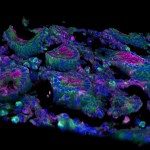Link to Pubmed [PMID] – 22472855
Link to DOI – 10.1097/QAD.0b013e328353e46b
AIDS 2012 Jun; 26(10): 1269-79
From the publication of the first AIDS issue onwards, major advances have been made in the field of innate immunity during HIV infection. Innate immunity can be defined as the first and unspecific lines of defense constitutively present and ready to be mobilized upon infection. Although a large body of literature adamantly highlights that innate immunity is a critical weapon of defense against HIV and its simian parents (simian immunodeficiency virus, SIV), innate immunity is still underexplored. Focusing on innate immunity may open new paths for the development of innovative therapeutics and vaccine strategies against HIV. Understanding innate immunity may shed light on the natural protection occurring in rare HIV-1-infected individuals who control their infection. This review focuses on innate mechanisms sensing HIV-1 entry and controlling HIV-1 infection, as well as promoting inflammation and shaping adaptive immunity.



